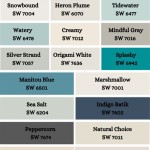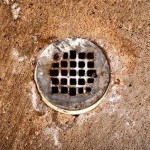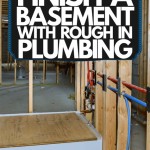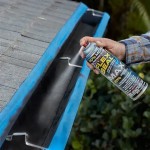Soundproof Basement Ceiling Without Drywall: Essential Aspects
Transforming a basement into a serene and comfortable space often requires effective soundproofing measures. While drywall is a common material for soundproofing, there are alternative options available for those seeking a more efficient or cost-effective approach. This article explores the essential aspects of soundproofing a basement ceiling without drywall, providing valuable insights and practical solutions.
1. Acoustic Panels
Acoustic panels are a highly effective solution for absorbing and dampening sound. These panels are made from various materials, such as fiberglass, mineral wool, and foam. They are typically installed on the ceiling using a grid system or adhesive. Acoustic panels provide excellent sound absorption, reducing echo and reverberation within the basement.
2. Soundproofing Blankets
Soundproofing blankets are another viable option for mitigating sound transmission. These blankets are composed of dense materials, such as mass-loaded vinyl or fiberglass, which act as barriers to block sound waves. They are often hung from the ceiling using hooks or grommets. Soundproofing blankets are effective at reducing both airborne and impact noise.
3. Insulated Ceiling Baffles
Insulated ceiling baffles are a combination of soundproofing and insulation materials. They are typically constructed from fiberglass or mineral wool, covered with a reflective facing. Ceiling baffles are suspended from the ceiling using wires or brackets. They absorb sound waves and provide thermal insulation, improving both the acoustics and energy efficiency of the basement.
4. Soundproofing Paint
Soundproofing paint is a specialized coating that can be applied to the basement ceiling. It contains sound-absorbing materials, such as ceramic microspheres or recycled rubber particles. While soundproofing paint provides some level of absorption, it is generally less effective than other methods like acoustic panels or blankets.
5. Ceiling Isolation Hangers
Ceiling isolation hangers are a critical component for reducing vibration transmission through the ceiling. These hangers are made from resilient materials, such as rubber or neoprene, which isolate the ceiling from the floor or joists above. Ceiling isolation hangers minimize structural noise, such as footsteps or machinery vibrations, from entering the basement.
6. Sealing Gaps and Cracks
To ensure the effectiveness of any soundproofing measures, it is essential to seal gaps and cracks around the ceiling. Gaps around pipes, wiring, and other penetrations can allow sound to escape or enter. Use acoustic sealant or caulk to fill these openings and prevent sound leakage.
7. Covering Windows and Doors
If the basement has windows or doors, it is crucial to address their soundproofing as well. Cover windows with thick curtains or add acoustic window inserts. Seal any gaps around the door frame with weatherstripping or door sweeps to prevent sound from entering or escaping.
Soundproofing a basement ceiling without drywall requires careful consideration of various factors and the implementation of effective solutions. Acoustic panels, soundproofing blankets, insulated ceiling baffles, and soundproofing paint offer varying levels of sound absorption and noise reduction. By combining these methods and addressing other potential sound leakages, homeowners can create a more peaceful and enjoyable living environment in their basement.

Soundproofing Ceilings How To Soundproof A Ceiling

6 Cheapest Ways To Soundproof A Basement Ceiling

Bungled Basement Soundproofing The Expert

How To Soundproof An Unfinished Basement Ceiling 4 Cheap Ways Guide

Nova Basement Remodeling Soundproofing In

Soundproofing A Home Workshop Technical Details Two Teaching Videos

How To Soundproof A Basement Ceiling

Basement Ceiling Soundproofing 4 Diy Ways To Do It Cheap Youtube

How To Soundproof A Basement Ceiling The Only Guide You Ll Ever Need Better Soundproofing

Botched Duplex Soundproofing The Expert
See Also








